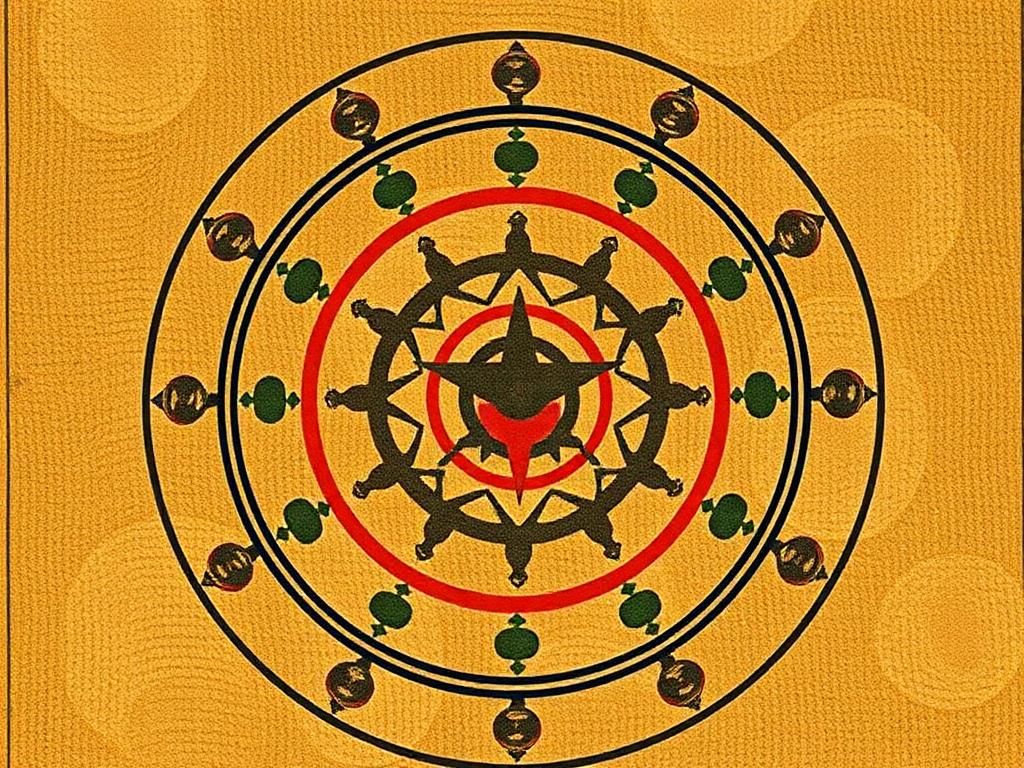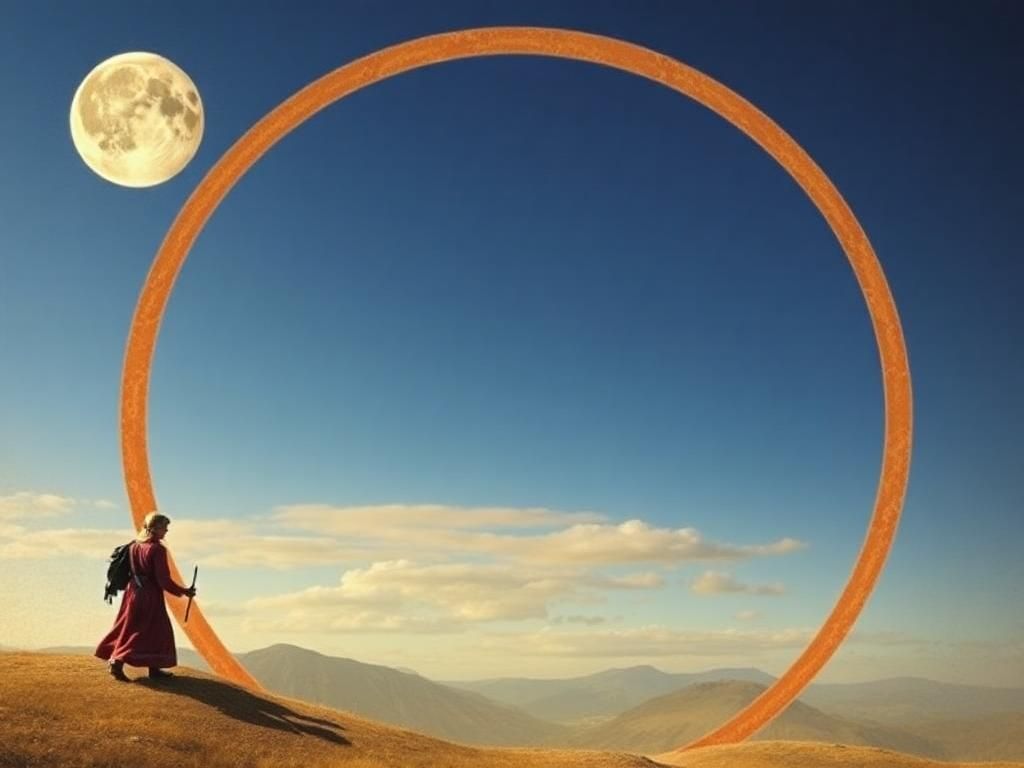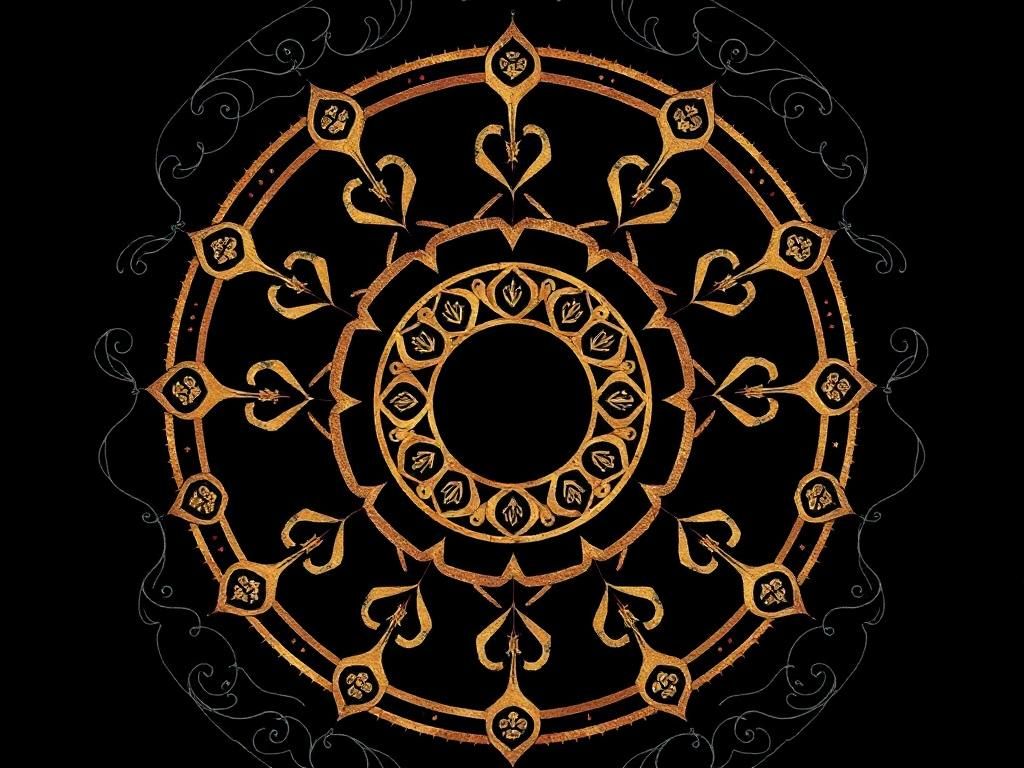The symbolism of the circle holds significant weight in various cultures and disciplines, transcending mere geometry to embody concepts of unity, eternity, and wholeness. In our daily lives, we encounter circles in numerous forms, whether through nature, religious practices, art, or even our individual experiences. Understanding this powerful symbol provides insights into humanity’s collective psyche, its beliefs, and its values. The circle, a geometric figure with no beginning or end, reflects the continuous cycles of life and the interconnectedness of all things.
This article delves into the multifaceted symbolism of the circle, tracing its historical roots, examining its roles in religion and spirituality, exploring its artistic and literary representations, considering psychological interpretations, and addressing its presence in nature and contemporary society.
Historical Context of the Circle
Ancient Civilizations and the Circle
Throughout history, ancient civilizations have revered the circle for its unique properties and profound significance. In architecture, structures like Stonehenge and the Colosseum exemplify how the circle has been utilized to create spaces that evoke awe and reverence. Stonehenge, a prehistoric monument in England, is a prime example of circular design with its massive stones arranged in a circular pattern, believed to be aligned with astronomical events.
Additionally, circles appear prominently in religious symbols, notably the wheel in Buddhism, referred to as the *Dharmachakra*. This wheel symbolizes the cycle of birth, life, death, and rebirth (samsara), representing the teachings of Buddha and the importance of spiritual journeying.
The Circle in Mythology
In mythology, circles often convey deep spiritual meanings and demonstrate cycles of existence. The Ouroboros, a serpent or dragon eating its own tail, symbolizes the eternal cycle of life, death, and rebirth. This ancient symbol represents the idea that destruction and creation are interconnected and one leads to another.
Furthermore, many creation myths around the world reference circular patterns. In these stories, the act of creation often begins with a circular form, encapsulating the idea of the universe emerging from a singular point of origin, reinforcing the significance of the circle in mythological context.
The Circle in Religion and Spirituality
Universal Symbol of Unity
The circle is universally interpreted as a symbol of unity and wholeness. In various religions, it embodies concepts of infinity, completeness, and eternal love. In Kabbalah, circles symbolize the divine light that envelops all creation, highlighting the interconnected nature of existence and spirituality.
Native American rituals, too, often utilize circular forms, viewing them as representations of the earth and life. The medicine wheel, for instance, serves as a spiritual tool for healing and understanding the cycles of life and the four directions, emphasizing the importance of balance within the natural world.
Circular Symbols in Religious Practices
Circles manifest in sacred practices, such as the use of mandalas in Hinduism and Buddhism. These intricate, geometric designs are not only artistic expressions but also serve as spiritual guides leading to enlightenment. Completing a mandala during meditation symbolizes an individual’s connection to the universe and the journey toward spiritual fulfillment.
In Christianity, the rosary employs a string of beads arranged in a circular fashion, signifying the continuity of prayer and the cycle of faith that reflects one’s relationship with God. The circular shape emphasizes the unbroken bond and continual devotion.
The Circle in Art and Literature
The Circle as a Design Element

In the realm of visual art, the circle features prominently as a design element that enhances aesthetic appeal and harmony. Movements like Impressionism and Modern Art utilize circles to create balance in compositions. The circular shape draws the viewer’s eye and creates a sense of movement, rhythm, and unity.
For example, renowned works like Claude Monet’s Water Lilies use circular brush strokes to evoke the gentle motion of water, conveying a sense of tranquility and connectedness with nature.
Circles in Literary Symbolism
In literature, the circle emerges within circular plots and narratives. Authors often construct stories that return to their starting points, reinforcing themes of continuity and the cyclical nature of life. Classic examples include Shakespeare’s A Midsummer Night’s Dream, which encapsulates a journey that returns to its origin, representing the intertwining of love and illusion.
Moreover, the concept of the hero’s journey, pioneered by Joseph Campbell, can be seen as a circular narrative form, where characters undergo transformative experiences that ultimately lead them back to themselves, symbolizing growth, self-discovery, and rebirth.
Psychological Interpretations of the Circle
The Circle in Human Cognition
From a psychological perspective, the circle serves as a model for understanding human experiences and cognitive processes. Research suggests that people often perceive circles as safe and comforting shapes, which can evoke feelings of calm and security. This innate response underlines the psychological impact that circular forms can have on our emotional states and mental well-being.
The Circle in Dreams
Dreams involving circles frequently appear as symbols of completion and resolution. According to Jungian psychology, circular symbols represent the unconscious mind’s way of communicating deep-seated truths about one’s psyche. Circular dreams may reflect issues that need to be addressed or signify the attainment of personal wholeness, inviting individuals to explore their innermost feelings.
The Circle in Nature
Natural Patterns and the Circle
The circle is prevalent in nature, appearing in forms such as the rings in tree trunks, the formation of coral reefs, and the cycles of the seasons. These natural patterns demonstrate how circles are integral to ecological processes and the balance of life on Earth. Recognizing these circles helps us understand the interconnectedness of ecosystems and the role of each element within a larger context.
The Circle as a Symbol of Balance
In nature, the circular form symbolizes equilibrium and harmony. The circular dynamics of ecosystems illustrate how species rely on each other to maintain balance within their environments. For example, the life cycles of predators and prey create cyclical interactions essential for biodiversity and sustainability, highlighting the importance of circular designs in maintaining ecological balance.
Modern Interpretations of the Circle
The Circle in Contemporary Culture

In contemporary design, the circle has become an influential element, particularly in logos and branding. Many modern brands utilize circular symbols to convey stability, community, and trust. The simplicity and versatility of the circle make it a popular choice for effective branding strategies, from tech companies to food products.
Additionally, the circle serves as a prominent representation in social movements. Icons like the peace sign and equality symbols leverage the circle to promote messages of unity and collective action, illustrating the powerful role of this shape in driving social change.
The Circle in Technology
In today’s digital landscape, circular symbols manifest in various interfaces, particularly loading circles, buttons, and icons. These circular forms streamline user experiences by making interactions intuitive and visually appealing. Such design choices enhance user satisfaction and efficiency across applications and devices.
Furthermore, circular networks in social media symbolize accessibility and openness, fostering connections among individuals and communities worldwide. These modern interpretations of the symbolism of the circle reflect its adaptability and continued relevance in our evolving culture.
Conclusion
The symbolism of the circle reveals profound insights into human existence, encapsulating themes of unity, cycles, and interconnectedness. Through historical exploration, spiritual practices, artistic representations, psychological interpretations, and contemporary applications, we appreciate the depth and multifaceted nature of this shape. By recognizing and reflecting on circular symbols in our own lives, we can cultivate a deeper understanding of ourselves and our place in the world.
References
| Symbolism of the Circle | Examples | Cultural Significance |
|---|---|---|
| Unity | Kabbalah, Native American rituals | Represents interconnectedness of life |
| Cycle of Life | Ouroboros, Buddhist wheel | Symbolizes renewal and rebirth |
| Completeness | Mandalas, Rosary | Encourages spiritual reflection and continuation |
| Balance | Ecological circles in nature | Reflects harmony in ecosystems |
FAQ
What does the circle symbolize in different cultures?
The circle often symbolizes unity, continuity, and wholeness across various cultures. It represents the interconnectedness of life and the cyclical nature of existence.
How is the circle used in religious practices?
Circles serve as significant symbols in religious practices, such as mandalas in Hinduism and the rosary in Christianity, emphasizing the concepts of spirituality and eternal devotion.
What psychological meanings are associated with circles?
Psychologically, circles are perceived as safe shapes that evoke calmness and security, influencing emotional states and cognitive processes.
How do circles appear in nature?
Circles are found in nature through tree rings, coral formations, and seasonal cycles, highlighting balance and interconnectedness in ecosystems.
What role do circles play in modern design?
In modern design, circles convey stability and trust while being integral to logos, branding, and user-interface designs in technology.
Can circular symbolism be found in art and literature?
Yes, circular symbolism appears in art and literature, emphasizing themes of continuity and connection, as seen in circular plots or artworks that incorporate circular design.
How can observing circles in life enhance understanding?
Observing circles in our environment allows us to reflect on themes of unity and interconnectedness, fostering a deeper appreciation for the complexity of our experiences.
What is the significance of circular shapes in dreams?
In dreams, circles can signify completion or resolution of issues, often representing the subconscious mind’s way of communicating personal truths.
What historical structures feature circular designs?
Historical structures like Stonehenge and the Colosseum demonstrate the enduring significance of circular designs in architecture reflecting cultural and spiritual meanings.
What is the connection between the circle and social movements?
Circles, such as peace signs and equality symbols, communicate messages of unity, inclusivity, and collective action, playing a significant role in social movements.
